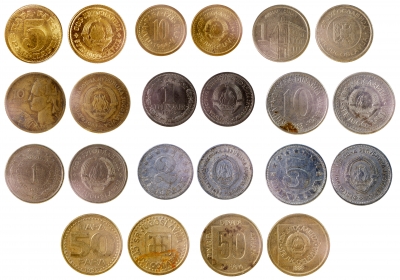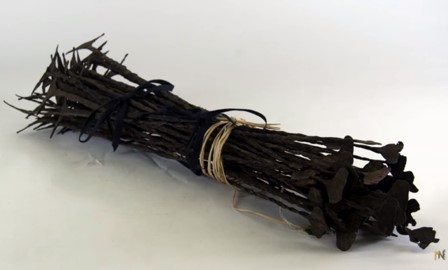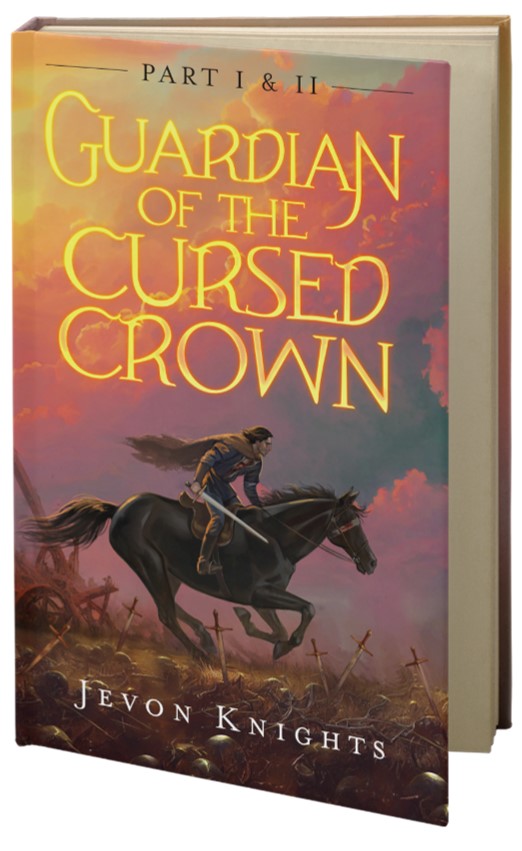
In my soon to be released novel Guradian of the Cursed Crown, the protagonist Larsen finds himself trying to bribe his way out of a situation.
At first I just threw a price in, something like 10 gold coins or whatever, a nice well rounded figure from a cliché currency that seems valuable enough to entice anyone in some 13th century based period.
But then I wondered, how much is 10 gold coins really worth? What does it even look like? Would it just be called something entirely vague like gold coins?
Currency in Medieval Europe

First I thought about all the stories I watched and read over the years that involved currency. In the Mistborn trilogy, society trades with coins called boxing. The many books of the Warhammer series use a combination of crowns, shillings and pennies. And the infamous Game of Thrones has several currencies with names like dragons and moons and stags.
But I wanted to start somewhere a bit more factual, so I did what any sane person living in the early 21st century would do – I Googled it.
I found various articles and forums and reddits on the topic of medieval European currency, the basis of most fantasy settings, but eventually I settled on three main places to average out prices from.
University of California Davis (UCDavis) has a useful website dedicated to medieval studies with a section on prices in medieval times, along with one of their lecturers over at Gigazine, exactly what I was looking for. They establish concepts like dwt (pennyweight in relation to a pound of sterling silver) of a penny is 24 grams, followed by 12 pence equalling 1 shilling and 20 shillings equalling 1 pound. Then going on to list all manner of prices like clothes costing between 4 pence to 6 shillings depending on the quality, and tools like a hammer or chisel between 4 pence to 1 shilling.
The wages were a great point to note, where the captain of a military unit might make 8 shillings a day, a kitchen servant would take two years to earn that much. Now that demonstrates the difference in social structures.
I appreciated the listing of all types of horses, from work horses going for 15 shillings to war horses costing as much as 60 pounds. That really shows the quality in these animals, and it worked great with my protagonist as I wanted his horse to rank among the best.
There is also a video game series I enjoy called The Elder Scrolls, the latest being Skyrim, that displays the prices of everything the player looks at from clothes to food to entire houses. Cross referencing with medieval prices revealed the game’s Septim currency was pretty close to the historical penny. The creators put a lot of work into that so it gave another great scale of value.
Currency Outside of Medieval Europe

Now all this is related to England and that side of Europe, but the world is a big place with many regions.
Other cultures had some interesting innovations to get inspired from, like currency shaped into beads, shells, spades and knives. I couldn’t find anything about 13th century Caribbean and the indigenous people that lived there, but I can only imagine they would barter in a similar fashion.
I was amazed that China actually had a paper currency in the form of promissory notes as early as the 11th century. And in Africa, iron and steel production were so significant that they were shaped into exchangeable items called hoe iron currency, the value coming from being able to melt down and reforge various weapons or tools.
The Youtube channel From Nothing had an amazing video mentioning the kissi penny, twisted strings of iron, and 30 bundles, each containing 20 kissi pennies, being worth one cattle. What really blew me away was the Topoke people using colossal iron blades as a form of trade. And when I say colossal, I mean huge six feet tall blades, useless in combat as they weren’t even sharp, but probably solid enough to demonstrate the material’s strength for crafting. Now that is awesome fantasy material.
.
So when it comes to creating currency in a story, I think it’s best to pick a culture in history that best matches the setting and average the prices based on factors like wealth and infrastructure. Concluding that, I now have a better idea how to price out goods and services in my stories.
As for Larsen’s bribe, I think an amount equivalent to 4 pounds should make any corrupted individual happy.
 Knights Writes
Knights Writes
This is great information….inspiring me to do some reasearch of my own. It also makes you think about money. Imagine pieces of paper with numbers on it determines what a person’s social status is. In other countires in different eras, people traded, used stones, iron (as you stated). This thing we call money! life! . It is really great to know the depth of research going into this book. I cant wait to read it!
Thanks. Yes sometimes I wonder why the paper in your pocket should be so powerful. But it’s much easier to trade with than huge chunks of metal.